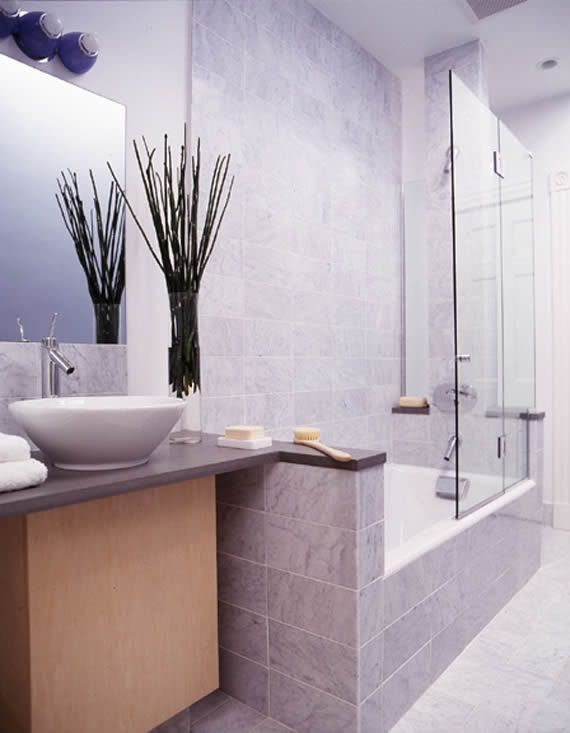
A look at some beautiful bathroom ideas.
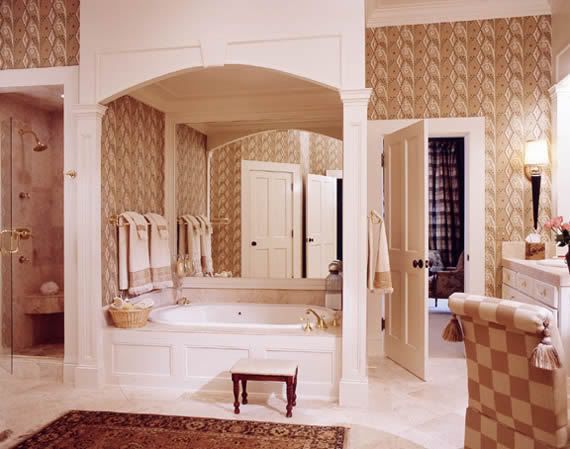
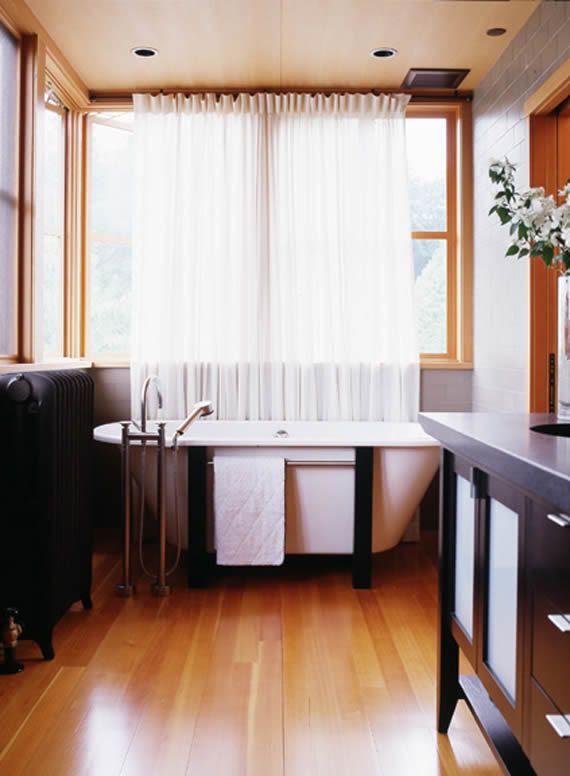
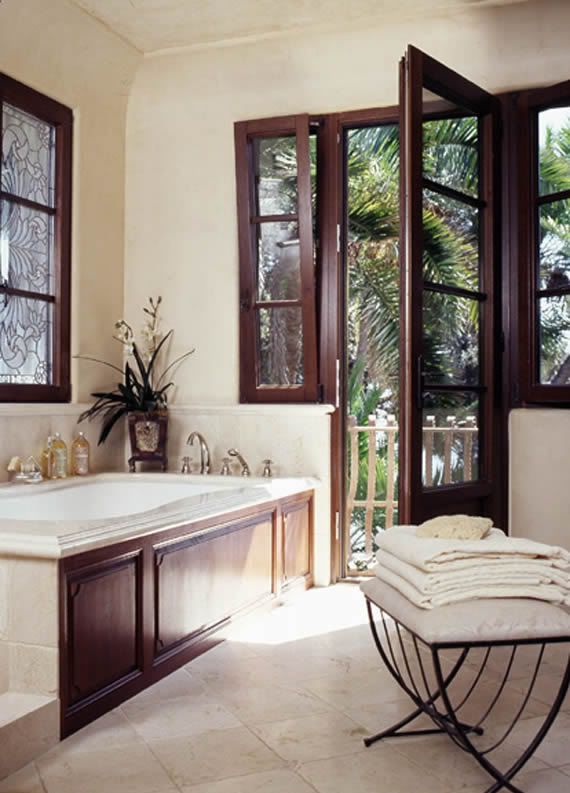
Meyda Tiffany Stained Glass Lighting and Windows, Mirror Wall Clocks and Wall Mirrors, Home Decor News and More!

 Marble tiles and slabs stands as decorative natural stone flooring, which cannot be matched aesthetically. Marble has been reasonably sought by artists, artisans, and architects for about thousands of years, and is decisively rooted in the history of architecture, art and best of the development in Western Civilization itself. Marble is known as the best choice for art.
Marble tiles and slabs stands as decorative natural stone flooring, which cannot be matched aesthetically. Marble has been reasonably sought by artists, artisans, and architects for about thousands of years, and is decisively rooted in the history of architecture, art and best of the development in Western Civilization itself. Marble is known as the best choice for art.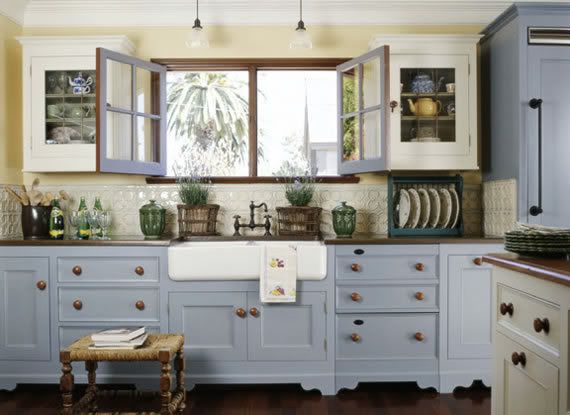
 Home decorating fabrics are meant to compliment a room. Beautiful fabrics can improve any space. Home decorating fabrics are used in upholstery, couch covers, slip-covers, bed coverings, window treatments, table coverings, etc. A room without fabric is plain with a cold feeling. Using fabrics, a space can be transformed into an inviting, warm and cozy place to relax and enjoy with family and friends.
Home decorating fabrics are meant to compliment a room. Beautiful fabrics can improve any space. Home decorating fabrics are used in upholstery, couch covers, slip-covers, bed coverings, window treatments, table coverings, etc. A room without fabric is plain with a cold feeling. Using fabrics, a space can be transformed into an inviting, warm and cozy place to relax and enjoy with family and friends. Are you looking for a way to decorate your home inexpensively and give it a warm and inviting feeling? Displaying photos of family and friends around your home immediately invites people to get a glimpse of what is important to you. It also helps to make them feel welcome in your home.
Are you looking for a way to decorate your home inexpensively and give it a warm and inviting feeling? Displaying photos of family and friends around your home immediately invites people to get a glimpse of what is important to you. It also helps to make them feel welcome in your home. When decorating your own personal living space, the subject of lighting is quite important. More than just placing a lamp on a table or putting up a new ceiling fixture, lighting sets the tone for any home decor project. Lighting brings out details in walls, wall colors, wall textures, ceilings, floors, pictures, fabrics, furniture and so on.
When decorating your own personal living space, the subject of lighting is quite important. More than just placing a lamp on a table or putting up a new ceiling fixture, lighting sets the tone for any home decor project. Lighting brings out details in walls, wall colors, wall textures, ceilings, floors, pictures, fabrics, furniture and so on. This is the Meyda Tiffany Wicker Sunflower accent lamp. Great attention to detail can be seen in the stunning stained glass shade. Truly a work of art!
This is the Meyda Tiffany Wicker Sunflower accent lamp. Great attention to detail can be seen in the stunning stained glass shade. Truly a work of art! I love the beauty expressed with this decor scene. It projects a very ordered and clean feel. The use of earthy colors give an added touch of style.
I love the beauty expressed with this decor scene. It projects a very ordered and clean feel. The use of earthy colors give an added touch of style.

 Castle in the Valley- Great for a child's room.
Castle in the Valley- Great for a child's room. A Day in the Sun- This is both beautiful and relaxing.
A Day in the Sun- This is both beautiful and relaxing. Abstract Piano- Perfect for a music room.
Abstract Piano- Perfect for a music room.
Many individuals elect to redecorate their home. However, many of these people often spend more time and money on home decorating projects than is really necessary. There are many unique and creative ways in which an individual can save money when they wish to redecorate their home, or remodel in one way or another. Here, you will learn some of the top tips for home decorating that will allow you to do just that! In addition to saving money, these tips will increase the overall value of your home.
The first step you can take when engaging in home decorating is to ensure that you keep your projects plain, to a point. If you want to create a new look in the home, and add value to the home, it is important to keep the customization to a minimum. This is especially true when you are dealing with paints. Many individuals find themselves spending tons of money on customized paint jobs. However, the truth is, using simple colors when painting can change the appearance of the home. It is less expensive to paint in a structured way, and it adds more value to the home on the whole.
The next top design tip for home decorating is to ensure that you are decorating in a fashion that is comfortable for you. Many individuals will decorate in such a way that they want to appeal to the senses of others. While these methods may actually turn out to be beautiful, they may not turn out to be what you will be happy with. If you are going to redecorate, or change the home in any way, be certain that it is right for you. Sure, your design may not appeal to others, who cares? It is your opinion that matters, you must choose what is best for you!
Before starting any type of home improvement or home redecorating project, it is absolutely essential that you plan the project to the best of your ability. In order to make the best choices on the design of your home, choose the most suitable materials, and be completely satisfied once the project is completed, it is important to establish a plan. Going into a project with absolutely no direction can result in a big mess. However, if you plan your home decorating project with precision, you are likely to find that the outcome is exactly as you expected, sometimes more.
Prior to starting your home redecorating and/or home improvement projects, it is important that you ensure that you are completely comfortable with all of the city, county, and state codes and ordinances in your area. Many individuals start home improvement projects only later to find out that they have violated a particular code and/or ordinance in their area. This often requires many adjustments and can lead to heavy expenses. Not only will you be responsible for adjusting it appropriately, but you may incur heavy fines as well.
Prior to starting a home redecorating or home improvement process, it is important that you learn as much as you possibly can about the project that you will be completing. You should understand the steps that are involved in doing a thorough and high quality job on the task that you are interested in completing. If you are not familiar with the steps that are required, or do not know how to do a certain project, you may end up in a bigger mess than when you started. This can cost you a lot of valuable time and money. Research, study, and learn.
Once you have the home decorating or home improvement project planned, it is important that you research what materials will be required in order to complete the project. You should then look around and research different places where you can obtain the materials for less. Many individuals, who want to save money on building materials and other types of home redecorating and home improvement materials, will visit areas where they are demolishing a structure. Many times, you can get good materials for little or nothing when visiting these sites.
As you can see, there are many top tips for home decorating. By using the steps mentioned in this article, you can save yourself a lot of trouble, time, and money. All it takes is a little creativity, some structure, a plan, and the motivation to accomplish the goals that you have in home decorating and home improvement projects. This will ensure that all that you intend to do is completed in a good time frame, spending as little as possible, and in a fashion that you enjoy!
About the Author:
Gaetane Ross is a Home Improvement Consultant who has spent over 4 years focusing helping people remodel and improve their homes. She also specializes in Holiday Home Decorating. myhomeinteriordesignideas.com

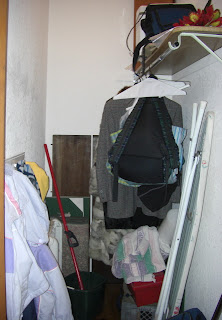
If you’re like most people, you never seem to have the time available to get the tasks you want to accomplish done. A huge reason why you can never seem to get things accomplished is your lack of organization.
Quite simply, you can never be productive if you spend half your life searching for items you’ve misplaced. Below are some tips to help you get your closet (and ultimately your life) organized today.
First of all, you absolutely must decide what items in your closet should stay and what need to go now. Be very honest in this process.
If you know, for instance, that you won’t be using that pair of shoes you get 10 years ago, but just like to keep them around for old time’s sake, then force yourself to give them up. It is items like these, which you have no use for, that are usually the biggest cause of the clutter in your home.
Often times, up to 90% of the items in your closet are no longer being used. If that’s the case, you can instantly take back over 90% of your closet space with just one thorough cleaning!
It is incredibly simple, yet very effective in getting your closet organized and ultimately your life. Once you’ve determined the items slated for removal, put them in boxes in the garage. From there, you can either throw them out or donate them to charity.
Next, group your similar belongings together. For instance, keep all your shoes together, your shirts, pants, etc. There is no bigger killer of your productivity then spending all your time searching for items you’ve misplaced.
In fact, just by doing these simple exercises, you will likely find that you have more free time than ever before, because you aren’t spending your time searching for items you should have at your fingertips.
After you’ve grouped your belongings together, don’t be afraid to make use of the closet floor. No, I’m not talking about strewing your items all over the place; simply make neat piles of your clothes in various areas. This takes the pressure of the vertical space in your closet (which in many closets is quite limited) and opens up more free space for your belongings.
Make sure you have some space left over when you’re done. Not only does having free space have tremendous aesthetic appeal, but it also provides you with some extra room should you decide to put more items in your closet.
For instance, if you finish your closet organizing and use up every inch of the closet, should you change your mind afterwards and want to put more items in there, there will not be room. If you leave some room, (say, a third of the closet) when you decide afterwards to delegate more items to your closet, you can do so with little trouble at all.
Again, these are some very simple, yet extremely effective tips at helping you organize your belongings for maximum efficiency. Quite simply, if you are able to organize your home and your life and know where all your items are, you will be simply amazed at how much more you can get accomplished. Follow these closet organizing tips, and watch your productivity as well as overall happiness skyrocket.
About the Author:
Josh Neumann
For more great organization tips, try visiting http://www.organizelifetips.com, a popular site that teaches closet organizing as well as home organization tips.

This handy organizer from Whitney Design keeps your closet organized while maintaining the loft and quality of your sweater collection. Crafted from durable canvas, the unit attaches to a closet rod with a wide Velcro sleeve and hangs straight down in a boxy shape. Each of the six shelves is flat and markedly sturdy, perfect for stacking sweaters. They also work well for storing jeans or stashing handbags. If you put your sweaters away for the summer, the organizer can easily be collapsed and stored as well. Constructed to fit any closet, the organizer measures 12 by 50 by 12 inches, and comes ready to hang.

Add a spot of artistic pizazz to any wall with this wonderful "Coffee Time" clock. Each clock features a high quality reproduction of an original acrylic painting decoupaged on wood and embellished with eye-catching black and white clock hands. It easily compliments any kitchen with a cozy image of a steaming cup of coffee and a fresh combination of warm, inviting colors. Handcrafted in the USA; Requires 1 "AA" battery.

Clocks are more than just mere timepieces. They can be used as good decorative pieces in your home. They come in various sizes and shapes. Clocks also are made from different materials. The nature of the material used and the clock manufacturer are among the most crucial factors in determining the quality of the clock, including its price. For example, a simple digital clock might fetch you a few dollars, while those wooden and antique grandfather clocks generally cost up to thousands or more. Today’s clocks are do not just provide time correctly, but they also add glamour and beauty in your home. There are many clocks available, especially of the pendulum type. From miniature, table-accent clocks to grandfather ones, clocks are a gorgeous addition to your home. Don’t you think it is now time to think of clocks as not just mere timepieces?
1. Clocks In History
Clocks first came into existence in 1656 when the first pendulum clock was built by Dutch astronomer and mathematician Christian Huygens. Prior to his invention, clocks during Huygens’ time were not inaccurate. The most accurate clocks that time were off by several minutes daily. Thanks to Huygens, having a reliable clock everyday proved to be possible. Huygens used a pendulum as the timer of the clock. Before Huygens, however, Galileo was already doing some work on how to invent a clock! Galileo even had a pendulum system to keep track of time. Unfortunately, he died before he was able to complete his work.
2. Decorating with Clocks
Decorating a home using clocks is not exactly new. Since a few hundred years ago, home owners and good decorators have been choosing clocks as decorative devices in their homes. Ever since the pendulum clock was invented by Christian Huygens in the 1600s to measure weights and as a type of swinging pendulum, clocks have been known as good decorative items.
3. Modern Clocks
Compared with past ones, today’s clocks are stylish and sleeker in style aside from serving its main purpose. More than just telling time, clocks of today’s age, thanks to the state-of-the-art technology, are definitely more elegant and nice to look at than compared with their older counterparts.
4. When Choosing A Clock:
- Remember that the clock you are buying should reflect your personal tastes and serve as a decorative complement in the room you are putting it in
- One good tip in choosing clocks is to look for the fashion and style in a clock. When looking for a clock, choose one that makes a statement
- If you want to have a French country look in your home, select wall clocks that reflect country accents, such as having a patina finish on the clock’s face, wrought iron accents, or wood base that were whitewashed
- If you, on the other hand, want a contemporary look, why not try to shop around for a clock that has minimalist lines as well as chrome. There are also clocks that are sleek and have stainless detailing.
- You could also choose big and oversized clocks if you want to emphasize your timepiece, compared with a smaller one that could get lost in a clutter.
5. Large Clocks
- If you want to balance out an oversized lamp, try putting a traditional anniversary clock on the end of the table
- You could also put a wall clocked placed on a sturdy and decorative easel in your kitchen for quick and instant charm
- Having an antique grandfather clock in your den provides extra comfort and warmth. Of course, the grandfather clock should be in a nice condition. Otherwise, the effect is somewhat diminished
About the Author:
Paul Graham
For more great clocks related articles and resources check out http://clocks.homemanner.com.


Ah, there is nothing more welcoming and memorable than walking into a nice smelling home. Do you want your home to smell nice and clean, but do you also want a better, and safer alternative to expensive synthetic air fresheners which can be unhealthy? Synthetic aerosol air fresheners and room sprays can be the cause of severe breathing problems in children and people with asthma. A scary fact is, that the manufacturers of these synthetic air fresheners keep the chemical composition a closely-guarded secret. They are designed to mask or cover up odors rather than remove the odor. However, it's far better to eliminate odor from the source by cleaning than trying to cover it up.
First, identify the source of any odors. Garbage can be taken outdoors and the other most common odor sources; the kitchen and bathroom can be cleaned with an non-toxic cleaner. Cooking odors from strong smelling foods will disappear after a short period of time.
Here are some safe and easy ideas to make your home smell great every day and when company comes calling too.
For all the rooms in you your home you can use a non-aerosol room spray made with all natural essential oils. These are safer and the natural scents will make your home smell nice, clean and fresh. There are a wide variety of scents available, try an energizing citrus, a warming spice, an exhilarating mint or pine scent to enhance the ambiance of your home.
Try this tip: Just before you expect your visitors to arrive, spray one or two pumps in your entry way or the first room they will enter. You just need to make a good first impression for your guest's. After one has been exposed to a scent for a while it become less noticeable, and our noses can't smell it any more that's why you can't smell your own perfume later in the day when everyone else still can.
You can give your home a wonderful appealing smell by simmering spices like cloves and cinnamon in water. It will smell like you've been busy baking all day. You can vary the scent by adding vanilla extract, orange or lemon peel to the mix. So, go ahead and raid your pantry or spice cupboard for these safe, economical and natural scents. You can use a special potpourri simmering pot, a mini crock pot or just a small saucepan on your stove top.
Scented candles are another alternative, look for the more environmentally friendly soy based candles with a lead-free wick as they burn cleaner. It's important to remember, never leave a burning candle unattended or near anything that could catch fire.
Try this tip: Light a scented candle half an hour before you expect your company to arrive so your home will smell nice when your guests enter. Then you can extinguish it and the lovely scent will linger. It's also more frugal to burn a candle for a short period of time.
With these tips and ideas you can safely and easily give your home a warm inviting ambiance for your family and visitors and enjoy a lovely smelling home everyday.
About the Author:
Melody Thacker enjoys helping people and marketing Watkins products part time. You can find more quick and easy cooking, cleaning and healthy lifestyle ideas at Watkins Home Products

Step-by-step color photographs and descriptive detail make this book indispensable for beginners looking to create beautiful and functional scented candles on their very first try, and for experienced crafters who want to sharpen their skills. Precise instructions eliminate the guesswork that too often creeps into how-to books. Gleaned from the expertise of master candle makers, this guide presents everything a novice needs to know to get started crafting traditional tapers and molded candles, container and rolled beeswax candles, and interesting variations on each. Includes guidelines for buying tools and materials, preparing the workspace, and working safely and effectively, as well as suggested shopping lists. This book includes the contributions of veteran candle makers and crafters.
About the Author:
Scott Ham is a master candle maker and owner of The Gettysburg Candle Company and Moonacre Iron Works in Gettysburg, Pennsylvania. Alan Wycheck is a photographer based in Harrisburg, Pennsylvania.

Numerous references from olden ages have illuminated the fact that lamps have been used to spread light, even before electricity was invented, and lighting was given a new meaning. The use of lamps can be broadly classified into two eras: The pre-electrical era and the post electrical era.
The Pre-electrical Era
The invention and first usage of lamp can be dated back to 70,000 BC. At that time, there was no metal or bronze to make lamps instead the then civilization used hollow rocks and shells. These hollow rocks were filled with moss and other natural substances and then soaked in animal fat. Animal fat acted as oil and this is how the first lamps were ignited.
With the advent of pottery, and the bronze and copper age, humans started to make lamps that imitated other natural shapes. Wicks came into existence much later and were used for controlling the flame or the rate of burning. In the 7th century BC, Greeks started using terra cotta lamps, which replaced the handheld torches. The word “lamp” has been derived from the Greek word “lampas”, which means “torch”.
Design Change
There was a major change in the design of lamps in the 18th century, when the central burner was invented. With the invention of the burner, a separate fuel source was made from metal. Another small change made was the addition of a metal tube that could be adjusted to control the intensity of the flame or light.
This was an important discovery in terms of lighting because with adjustment, humans were able to diminish the lighting or make it bright as required. Another aspect was added to the new lamp, which was in the form of small glass chimneys. The role of the glass chimney was to protect the flame as well as control the air flow.
Swiss chemist Ami Argand used the hollow circular wick in an oil lamp for the very first time in 1783.
Fuels for Lighting
Different kinds of fuels have been used for lighting a lamp between 70,000 BC and now. Most of the early forms of fuel were beeswax, olive oil, animal fat, fish oil, sesame oil, whale oil, nut oil etc. These were also among the most commonly used forms of fuel for lighting a lamp till the late 18th century.
Around 1859, the first drilling process was initiated to find petroleum and with the advent of kerosene, which is a derivative of petroleum, lamp became more popular and usage increased. Kerosene enabled lighting was first introduced in Germany in 1853.
During the same time two other products were used for lamp lighting purposes and they were natural gas and coal. The first use of coal gas lamps was in 1784.
Electrical Lighting Lamps
Lamps have actually come a long way from usage of coal gas to electricity. In 1801, Sir Humphrey Davy of England invented the electric carbon arc lamp, which was the first of its kind. The working principle for this lamp was simple and included hooking of two carbon rods to an electrical source.
The carbon rods were kept at a distance from each other so that electrical current could flow through the arc and thus vaporize carbon to create white lighting. Around 1857, A.E. Becquerel of France came out with the theory of fluorescent lighting in lamps. In the 1870’s, the unthinkable happened with Thomas Edison inventing the first electric incandescent lamp. Since then incandescent lamps were used for lighting purposes in homes till about the early 20th century.
In 1901, Peter Cooper Hewitt patented his new invention, the mercury vapor lamp. This was another type of arc lamp that enhanced lighting using mercury vapors, which were enclosed in a glass bulb. The Mercury vapor lamps set the prototype for fluorescent lighting lamps.
The Neon lamp was invented by Georges Claude of France in 1911 followed by Irving Langmuir, an American who invented the electric gas-filled incandescent lamp in 1915. In 1927, Hans Spanner, Friedrich Meyer, and Edmund Germer patented the first fluorescent lamp. The fluorescent lamps provided better lighting as compared to the mercury vapor lamps because they were coated from inside with beryllium.
Since then we have been using different form of lighting in lamps, which includes Mercury vapors, incandescent lamps and even today, in some corners of the earth people still use the old wick and oil lamp for lighting their homes.
About the Author:
Moe Tamani is an importer of Moroccan lamps and contributes on several Moroccan related sites as well as a designer of Henna Lamps.